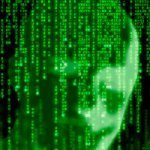Leaderboard
Popular Content
Showing content with the highest reputation on 10/24/24 in all areas
-
"In a cutting-edge development, that has sent shockwaves through the scientific community, researchers at University College London (UCL) have unveiled a radical theory that seeks to reconcile two pillars of modern physics – quantum mechanics and Einstein's general theory of relativity." Most of this is beyond me, but does anyone think this is a "cutting-edge development"? https://www.msn.com/en-us/news/technology/revolutionary-new-theory-finally-unites-quantum-mechanics-and-einstein-s-theory-of-general-relativity/ar-AA1sKLme?ocid=msedgdhp&pc=U531&cvid=8f705b996d7b40b5b2e77ece1cfecc61&ei=35#2 points
-
A recent idea offers a new perspective on one of the biggest mysteries in physics: the nature of dark energy. This proposal suggests that dark energy—the mysterious force driving the universe's expansion—could resemble a superconducting state of matter, composed of roughly 10^123 small "units" called SU(3) atoms, which stabilize the vacuum energy. The approach relies on well-established physical principles, such as the Meissner effect (seen in superconductors) and the third law of thermodynamics. According to this idea, at extremely low temperatures, the Meissner effect breaks U(1) symmetry while leaving SU(3) symmetry intact. To calculate the number of these SU(3) atoms in the universe, one could divide the volume of the observable universe by the volume of a proton, arriving at approximately 10^123 atoms. This number aligns precisely with quantum field theory (QFT) predictions for vacuum energy density, potentially resolving the long-standing discrepancy between theoretical calculations and observed values. What makes this idea compelling is its simplicity—it requires no exotic extensions or fine-tuning, sticking to established physics. It also proposes that the third law of thermodynamics keeps these SU(3) units stable at very low temperatures, ensuring that the vacuum energy remains consistent. This experimentally grounded and straightforward approach makes it worth considering: could this be the answer we've been searching for, or are there significant challenges that still need addressing? For those interested, you can read the paper here: https://inspirehep.net/literature/2778290.1 point
-
A somewhat more balanced analysis of the issues of wildlife management and interaction with human populations. https://theconversation.com/colorado-voters-weigh-a-ban-on-hunting-mountain-lions-as-attitudes-toward-wild-predators-shift-238265#:~:text=Colorado's Proposition 127 would ban,is currently legal in Colorado. There is also, imo, a cause for concern when the pelt of the animal has a high monetary value. History has shown repeatedly that species populations can be decimated by (sometimes illegal) over- harvesting, when there's a profit incentive. Apex predator populations are quite vulnerable, in this regard. Non-lethal methods of management often better protect the species and actually reduce dangerous human-animal encounters.1 point
-
Really Luc? you're still making the same mistake, you're conflating 'all of science' with 'all of philosophy'; mostly because, you don't really understand either... @Luc Turpin dude you're bright enough to string out these topics beyond their natural death, I kinda admire that, but for the love of god try listening as well, after which I'd welcome your input...1 point
-
Yes, I've read about it. So maybe you don't have to quantise the gravitational field. People have thought of that before. It didn't work. What's new here is that the metric is stochastic, which removes the consistency problems. It's been drawing a lot of attention, let me tell you. The theory is kind of Frankensteinish in the sense that the Liouville formulation of classical mechanics coexists with quantum dynamics of fields. It's ugly IMO, it looks pretty user-unfriendly, very heavy on the technical side, but it could be a preamble to some simplifying idea that explains why space-time, and the 'field' accompanying it are fundamentally different. The author himself concedes as much: (from the paper) Btw, a simplifying idea is what physicists call 'beauty', a term sorrily misunderstood. Thanks for the posts. Very interesting. ++1 point
-
1 point
-
Ooh I really like that paper still studying it. That paper is very well thought out thanks for sharing. +1 https://journals.aps.org/prx/abstract/10.1103/PhysRevX.13.0410401 point
-
Let's try to clear up some of the confusion here. First off, the SU(3) gauge symmetry you're talking about is related to the strong nuclear force—the interactions between quarks inside protons and neutrons. This symmetry remains unbroken, even at temperatures close to absolute zero. The key point is that the strong force operates at energy scales much higher than what we deal with in thermal physics at low temperatures. Now, you're asking how we can maintain temperatures below 1 Kelvin and still have the SU(3) momentum terms untouched. The thing is, temperature is a measure of the average kinetic energy of particles, but the strong interactions governed by SU(3) are internal to nucleons (protons and neutrons) and aren't significantly affected by such low external temperatures. The quarks inside protons and neutrons are bound together so tightly that the thermal energy at 1 Kelvin is negligible in comparison. For example, consider superconductors, which operate at very low temperatures. Even in materials cooled to fractions of a Kelvin, the protons and neutrons in their nuclei are still there, doing their thing, and the SU(3) symmetry is still at play. The electrons become superconducting, but the nucleons remain unaffected in terms of their strong interactions. Liquid helium is another good example. When helium is cooled below 2.17 Kelvin, it becomes a superfluid with fascinating quantum properties. Yet, despite this extreme cooling, the protons and neutrons in helium atoms continue to interact via the strong force as they always do. The SU(3) symmetry doesn't disappear or change because of the low temperature. Think of it this way: it’s like trying to alter the course of a speeding bullet by blowing on it. No matter how hard you blow, the bullet doesn’t notice. Similarly, the strong force doesn’t “feel” the low-temperature environment because its energy scale is so much higher. So, maintaining a system at less than 1 Kelvin doesn't interfere with SU(3) momentum terms because those interactions are internal and at much higher energy scales than thermal energies. The strong force is about a million times stronger than electromagnetic interactions, and thermal fluctuations at such low temperatures are too feeble to impact it. Regarding your concern about the number of SU(3) "vacuum atoms" exceeding the particle count in the observable universe: these "vacuum atoms" are a conceptual tool used to model the vacuum energy density. Comparing their number directly to the number of CMB photons isn't quite the right approach. You compare two different things! The model proposes that the vacuum can be thought of as being composed of these SU(3) vacuum units, and by doing so, it attempts to address the cosmological constant problem. By considering the vacuum at the scale of the strong force, the model aims to redistribute the vacuum energy in a way that makes sense with observations. Photons counts belong to different kind of force that already broken by Meissner effect. When you mention the critical density equating to roughly 5 protons per cubic meter at 2.73 Kelvin, you're talking about the average density of normal matter in the universe. The cosmological constant problem is about vacuum energy, which is a different aspect altogether. So, the model doesn't conflict with the observed matter density or the properties of the cosmic microwave background. It's offering a new way to think about how vacuum energy arises from fundamental symmetries that remain unbroken, like SU(3), and how this could solve a long-standing puzzle in physics. Hope that helps clear things up!1 point
-
I will try and be more specific. When bias threatens objectivity it is bad. When bias is acknowledged and mitigated with no effect on outcome, it can become indiferent. When bias is purposefully used to determine or not, or manipulate an outcome, then it is good. I hope less platitude this time. Obviously agree,1 point
-
You've got the gist of what the author's getting at, but let me clarify a bit. The author is still using the Planck scale as the cutoff in the harmonic oscillator calculation for vacuum energy, that's standard in quantum field theory. But here's where things get interesting: instead of accepting that enormous vacuum energy density we get from QFT with this cutoff (you know, the one that's off by about 123 orders of magnitude from what we observe), the author proposes a new way to look at it. He suggests that the vacuum energy isn't just uniformly spread out but is effectively distributed over a huge number of "SU(3) vacuum atoms." Now, these aren't atoms like you find on the periodic table. They're units associated with the unbroken SU(3) symmetry of the strong nuclear force. To figure out how many of these SU(3) atoms there are, he divides the total volume of the universe by the volume of a proton, since protons are governed by SU(3) symmetry. By thinking of the vacuum energy as spread out over all these SU(3) atoms, the effective vacuum energy density comes way down. This redistribution brings the theoretical prediction precisely equal to the observed value, tackling that massive discrepancy without changing the Planck scale cutoff itself. Now, you mentioned you still question the validity of this SU(3) atom scale, and that's a reasonable concern. The author is basing this scale on the properties of the strong nuclear force and the unbroken SU(3) symmetry, arguing that this scale might be more relevant for vacuum energy considerations. It's a departure from the usual methods, sure, but it offers a fresh perspective on the cosmological constant problem that might be worth exploring further. In essence, the author isn't throwing out the Planck scale but is reinterpreting how the vacuum energy calculated with it can be reconciled with what we actually observe, by considering the structure of the vacuum at the scale of the strong force. It's an interesting idea that challenges us to think differently about a long-standing problem.1 point
-
It is commendable that you recognize the legitimacy of the concept, for that is indeed the cornerstone of the paper. The derivation of SU(3) vacuum atoms based on the proposed framework is a logical consequence, and we must remember that mathematics, while indispensable, is merely the language we use to articulate these ideas, what truly matters is the underlying concept. Upon closer inspection of the paper, it becomes clear that the author employs two composite electrons as a scalar field to break U(1) symmetry, which is entirely consistent with spontaneous symmetry breaking as it is applied in condensed matter physics. This approach is far from unconventional; it aligns with established methods, merely adapted to address a novel issue. While you may have sought a more concrete definition of the SU(3) atoms, considering the effective range of the nuclear force is, in this context, both reasonable and appropriate. To describe the paper as “unusable” strikes me as an overstatement, given that the physics it presents is sound and the theoretical foundation well established. Certainly, there is always room for further development, particularly in the mathematical details, where i find that he is arguing that these su(3) vacuum atoms implies a quantum nature of the spacetime. It seems there might be some misunderstanding regarding the author's use of terms and concepts. While I'm not defending the paper, I can appreciate the logical framework it presents. The term "vacuum atom" is employed as a conceptual tool to describe the quantization of space at the scale of SU(3) symmetry. The number of these su(3) vacuum atoms is derived from dividing universe volume by proton volume. This approach isn't merely about scaling the universe using SU(3); it's about relating these symmetries to the very structure of the vacuum because su(3) remains unbreakable. Additionally, the paper suggests that the expansion of the universe can be understood through the Meissner effect, that is similar to the expulsion of magnetic fields in superconductors. This idea was first published by the same author in JCAP as he explained in the introduction of the paper [https://iopscience.iop.org/article/10.1088/1475-7516/2024/08/012 ]. By drawing parallels between cosmic expansion and the Meissner effect, the author offers a novel perspective that could open new avenues for research, potentially using condensed matter techniques to investigate cosmological phenomena. In essence, the paper lays down a logical foundation based on established physics principles, offering fresh insights into complex cosmological issues.1 point
-
And I think this is part of the problem. You are only repeating things other people say, but you aren't prepared to actually discuss and defend it. When you are prepared to discuss the details, I think people will be prepared to engage. But not if you're going to pass the buck like this. You were accused of cherry-picking by one person, and you kinda gave away the game by saying "This one is more in line with my expectations" in reference to the cited study. But this is emblematic of a larger pattern - extrapolating based on a small sample, much like your earlier claims of bias were focused on cognitive science but you were accusing all of science of having these problems. And nobody has argued that there isn't bias. But what we haven't really discussed much is what the biases are and how science fights against it. This whole thread started off discussing religion as the focus of alleged bias, and that's simply excluding non-science from the discussion. Science gets to decide what it investigates and what it doesn't. Trying to wedge religion/spiritualism into the conversation is viewed as an attempt to commandeer the legitimacy of science in a pursuit that is not science, and no, we're not having any part of it. Is it bias? Perhaps. We're biased against such piracy. You are free to go off and contemplate the mind using whatever tools you wish, and if you actually come up with answers I'm sure you'll shout it from the rooftop, but on this side of the border you do science.1 point
-
To return briefly to the point of the original OP - Two points come to mind: i. One of the reasons why Paul addressed the issue of marriage and offered guidance to Christians in the way that he did was because most of the early Christians were Chiliasts (from the Greek - χιλιαστες ‘a thousand years’) - meaning that they believed as a matter of faith that the Second Coming would occur within their own lifetimes, and that the risen Christ would return to earth and establish a Messianic age of universal peace and brotherhood prior to the Last Judgement. Given that schedule, it was reasonable for Christians to ask - Why get married at all when the Second Coming was just around the corner ? Paul’s advice was primarily aimed at those members of the faithful who really couldn’t control their lustful drives and wait chastely for a decade or so until the eschaton arrived. We know a certain amount about what early Christians believed from the surviving texts of patristic writers like Papias Bishop of Hierapolis (c.60 -130 AD) who visited various parts of the Holy Land and interviewed many other travellers passing through Hierapolis. Papias was said to have heard the apostle John speak, and to have met with Church elders of the first generation of Christians who had received their teaching and baptism directly from the original apostles of Christ. Unfortunately most of his writings (extant until the middle ages) have now been lost apart from some that survive in quotation. According to his principal commentator Eusebius, Papias himself was definitely a Pre-Millenial chiliast. https://en.wikipedia.org/wiki/Papias_of_Hierapolis ii. Pauls most explicit advice on marriage is found in the epistle 1 Corinthians : There is some debate among contemporary Christians as to whether he was advocating celibacy or simple abstinence, but given the apocalyptic mind-set mentioned above, it is difficult to see his advice as anything other than a form of short-term tactical pragmatism. One further point is the question of quite how many of the epistles attributed to Paul were actually written by him ? There was an interesting stylometric analysis of these texts done a few years ago using Rasch analysis which offers some useful insights: https://www.rasch.org/rmt/rmt151k.htm1 point
-
ChatGPT, go-to model for private tasks and for some work. (using paid version; see official price on their web) Some examples: -General exploring of LLM and what their capabilities and limitations are -Getting a second opinion when helping my kids with homework; taking a picture of a problem and asking for different approaches. -Using plugins, for instance "@Wolfram" for mathematical results by using Wolfram alpha -Loading a few (public) papers and asking for comparisons, differences or if a statement is supported by the papers or not -Building GPTs to explore what kind of ecosystems that may or may not emerge in the world of GenAI. Copilot (licensed by employer) -Work, especially any work that needs access to corporate data or that is intended for use in a commercial context Local installation of Stable Diffusion or Flux.1 (free, not counting local hardware) -Image generation Local installation of Llama 3.1 (free, not counting local hardware) -Experiments with text; comparing to larger models, testing the limits of smaller local models For some tasks, such as organising a workshop or preparing a seminar I may use combinations of the above models depending on the context and the points I want to illustrate.1 point
-
Dear Mordred, thank you for your this question. I'd be happy to clarify how the Meissner effect relates to the cosmological constant and why we might not see its evidence in the Cosmic Microwave Background (CMB), which involves processes like Compton scattering. Firstly, it's important to consider the timeline of the universe: the CMB was emitted approximately 380,000 years after the Big Bang during the recombination era when electrons and protons combined to form hydrogen, allowing photons to travel freely, whereas the cosmological constant (dark energy) became dominant much later, roughly 7 billion years after the Big Bang, leading to the accelerated expansion of the universe we observe today. The Meissner effect is a phenomenon observed in superconductors at extremely low temperatures, where magnetic fields are expelled due to the spontaneous breaking of U(1) gauge symmetry; in the context of the paper, this effect is extended to cosmology by proposing that a similar symmetry-breaking mechanism occurs in the vacuum at very low temperatures, contributing to the cosmological constant. We do not see evidence of the Meissner effect in the CMB because the effect becomes relevant long after the CMB was emitted—the processes governing the CMB, such as Compton scattering and recombination events, and those related to the cosmological Meissner effect occur at different times and involve different physics. The Meissner effect's influence on the vacuum is uniform at cosmic scales, meaning it doesn't introduce anisotropies or fluctuations that would leave an imprint on the CMB's temperature or polarization patterns. Additionally, the energy scales relevant to the Meissner effect are vastly different from those at recombination; the CMB photons are relics from a hot, dense universe, while the Meissner effect operates under conditions of extremely low energy and temperature in the late universe. In essence, we do not see evidence of the Meissner effect in the CMB because it influences the accelerated expansion of the universe rather than the microwave background radiation itself, and its relevance emerges in the universe's low-temperature state much later than the era of CMB formation. I hope this clarifies your question.1 point
-
Dear MigL, Thank you for your comment and for engaging with the paper. I'd like to address your concerns and clarify the robustness of the arguments presented. The paper posits that U(1) symmetry is broken at present-day temperatures due to the Meissner effect—an experimentally verified phenomenon in superconductivity where magnetic fields are expelled, indicating the spontaneous breaking of U(1) gauge symmetry without violating charge conservation, as per Noether's theorem. Consequently, SU(3) emerges as the residual unbroken symmetry at near-zero Kelvin, effectively dominating the vacuum structure of the universe. Although the proton is a composite particle, it is the smallest stable unit where SU(3) interactions are fully realized due to the confinement property of Quantum Chromodynamics (QCD). By dividing the universe's total volume by the volume of a proton, the author estimates the number of these SU(3) units or "atoms" filling the cosmos, providing a quantitative link between the microscopic properties of SU(3) symmetry and the macroscopic vacuum energy density observed in cosmology. This approach is grounded in well-established principles of symmetry breaking, quantum field theory, and thermodynamics—not mere numerology. The third law of thermodynamics supports the stability and uniformity of the SU(3) vacuum structure as temperature approaches absolute zero. Extending the Meissner effect to cosmology, the paper suggests that U(1) symmetry breaking leads to a form of cosmic superconductivity, potentially decoupling dark energy from electromagnetic fields—consistent with observations. By considering SU(3) as the dominant residual symmetry operating within proton-sized volumes, the paper offers a physically motivated solution to the cosmological constant problem. Why is it necessary to assume a new particle when the problem can be solved using SU(3) symmetry? Why introduce additional complexities when a simpler solution might suffice?1 point
-
As far as I understand from the paper, SU(3) is confined within a scale of about 10^{−15} meters, which can be referred to as the "atom," "unit," "range," or any term that reflects the effective size of SU(3)'s action. When one divides the volume of the universe by the effective volume of one SU(3) "atom," one gets the precise number of these SU(3) units that matches exactly the value needed to resolve the cosmological constant problem, showing how the vacuum energy density is determined by the total number of these SU(3) "atoms" in the universe. The paper is entirely founded on previously published research by the same author, which proposed that dark energy is a superconducting state of matter. This work was published in the prestigious journal JCAP https://iopscience.iop.org/article/10.1088/1475-7516/2024/08/0121 point
-
The Meissner effect is covered in Section II of the paper, and it's important to note that resolving the issues between QFT and GR isn't about the number of equations. Instead, it's about understanding key physical concepts. For example, de Broglie’s introduction of wave-particle duality or Pauli's conceptual explanation of spin didn’t rely on a flood of equations but rather on profound physical insights that shaped modern physics. Similarly, this paper is built on well-established experimental effects, like the Meissner effect, and shows that the discrepancy between QFT and GR in calculating vacuum energy density stems from a misunderstanding of these underlying physical principles, not a lack of equations. The goal is to merge QFT and GR through clear conceptual understanding, rather than by adding more speculative postulates or mathematical complexity Read sections II and III that contains the equations that describes these SU(3) atoms. This is the version of the paper that contains all detailed equations https://papers.ssrn.com/sol3/papers.cfm?abstract_id=47833081 point
-
The materials that exhibit the Meissner effect, confirmed in superconducting states, are part of the universe governed by the SU(3) × U(1) symmetry. When these materials enter the superconducting state at near absolute zero, they are effectively governed only by SU(3), as the U(1) symmetry is broken. This demonstrates that, in their superconducting state, these materials align with the behavior of the vacuum where only SU(3) symmetry remains unbroken. the authors argued for that in details in their JCAP papers https://iopscience.iop.org/article/10.1088/1475-7516/2024/08/0121 point
-
The paper just used Meissner effect that implies breaking U(1) symmetry. When one uses this, only SU(3) remain intact. The Meissner effect happens for ordinary materials at 70 K or even higher. The average temperature of CMB is much lower. It is only 2.7 K.1 point
-
Look at the table in the paper that outlines the temperature scales at which symmetry breaking occurs. As far as I understand from reading the paper, the universe began in the radiation-dominant era, where all particles were massless due to the extremely high temperatures (around 10^16 GeV and 10^29 K). At this stage, all symmetries (SU(3) × SU(2) × U(1)) were unbroken, and the universe was dominated by radiation energy. As the universe expanded and cooled, it reached the electroweak symmetry breaking scale (around 100 GeV, or approximately 10^15 K), where the electroweak symmetry broke, leading to the creation of mass. This marked the beginning of the matter-dominant era, where mass formed and matter became the dominant energy source. As the universe continued cooling, it transitioned into the dark energy-dominant era, where dark energy drives the accelerated expansion of the universe. In the current era, with an energy scale around 10^-3 eV and a temperature of 2.7 K, only SU(3) remains unbroken, while the experimental Meissner effect has broken U(1) at low temperatures. The authors argue that SU(3) is stabilized by the third law of thermodynamics, preventing further symmetry breaking. The third law of thermodynamics states that it is impossible to reach zero Kelvin by any finite number of physical cooling steps, implying that there is always a remnant volume that never vanishes, unlike what would happen according to ideal gas theory at absolute zero. This remnant volume appear to be the proton volume, and that may explain why proton has never been observed to decay. The reference to absolute zero is significant, as it emphasizes that at these extremely low temperatures, SU(3) remains unbroken, stabilizing the vacuum energy and providing a solution to the cosmological constant problem. The cosmological constant discrepancy, as noted by Weinberg, arises because quantum field theory (QFT) predicts a vacuum energy proportional to the fourth power of the Planck energy, resulting in an enormous value of 10^76 GeV, while the observed vacuum energy density is about 10^-47 GeV—a difference of 10^123 orders of magnitude. The mathematical approach of the paper is key to resolving this discrepancy. The author redefined the Lagrangian of QCD by dividing it by the 10^123 atoms of SU(3) that are realized to exist in the universe. This redefinition stems from the insight that there are approximately 10^123 atoms of vacuum energy based on the volume of the universe divided by the proton volume. When computing the vacuum energy density from this modified Lagrangian, the result matches the observed value precisely, solving the cosmological constant problem. I recommend reviewing the table in the paper for a clearer understanding of these phases and how they relate energy and temperature scales to symmetry-breaking events in the universe If you read the paper, it is solidly based on the experimental Meissner effect, which shows that U(1) symmetry is experimentally broken at low temperatures, leaving SU(3) as the remaining symmetry close to absolute zero. The paper’s entire premise relies on this experimentally verified Meissner effect. Additionally, I have read another paper by the same author, where they demonstrated that dark energy represents a superconducting state of matter. This paper was published in JCAP, a highly prestigious journal. https://iopscience.iop.org/article/10.1088/1475-7516/2024/08/0121 point
-
1 point
-
Very interesting, thank you! I'm very far from being an "expert" on cryptography, btw.1 point
-
No practical application, maybe. But it does provide a 'bound' on what can be done. If you can't do it mathematically, you can't do it physically either. ( although the opposite is not always true; some things you can do mathematically cannot be done physically )1 point
-
1 point














